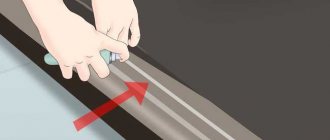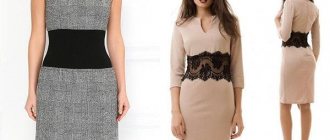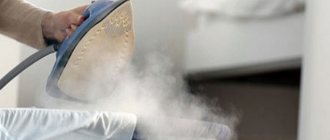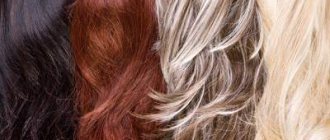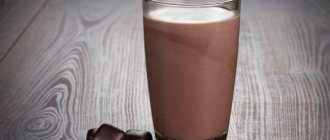Where are the puffs?
A snag can appear on any material. But if cotton and linen clothes can be simply ironed well, then with thin, delicate materials you will have to tinker a little. A small puff on a dress can be removed in a few minutes, but some actions are contraindicated:
- Do not pull the fabric too much in different directions.
- There is no need to try to use scissors, unless we are talking about pills on knitwear.
- Don’t think that you can deal with puffs and pills with regular washing.
Most often, tightening occurs:
- on knitwear;
- on synthetic materials;
- on chiffon;
- on woolen knitted products;
- on silk and satin.
Important! Situations are different, and sometimes some knowledge can play an important role in life. Be sure to read about how to remove a puff on tights.
Kinds
How to remove a puff on tights? Here you need to know what type of product you are dealing with. There are several types of tights:
- Thermal tights. They are made from several types of fibers (a mixture of synthetics, wool, elastin, cashmere, etc.).
- Therapeutic (a special type of tights with antiseptic impregnation, intended for women with varicose veins).
- Openwork, decorative (with a pattern, mesh).
- Knitted (similar to knitted, made from wool, half-woolen, cotton threads).
- Elastic (nylon).
It is not possible to remove the puff from all types of tights. The easiest way to do this is on knitted, warm, therapeutic, decorative, and openwork models. The most difficult thing to deal with are elastic transparent tights. The lower the density, the more difficult the task.
If your tights are from 5 to 40 den, you will have to abandon the idea, or resort to radical measures (read below), since, alas, it will not be possible to completely restore the fabric. But the 50 den models still have a chance to “live” for some time.
You can also “conjure” tights with weaves (with mesh, openwork knitting). This is the so-called fantasy option. If you try a little, it can be restored. Let's consider the available methods.
Remove puff in two minutes
How to remove a puff on chiffon, silk or satin? There is one very simple way that allows you to remove a small snag in a few minutes. You need:
- thin needle;
- iron with steamer.
Your main task is not so much to remove the puff, but to make it invisible. For this you need a thin needle, preferably with a wide eye - so that the puff can pass through it freely:
- Straighten the fabric.
- Insert the needle from the front side next to the puff so that the entire needle, except the eye, is on the wrong side.
- Insert the tightening thread into the eyelet.
- Pull the hook to the wrong side.
- Gently pull the fabric in different directions.
- Steam the hook area.
Important! There is no need to cut the thread - instead of a small puff, you can get a very noticeable hole. When steaming, the thermostat must be set to the mark corresponding to the material.
What to do to prevent marks from appearing
Lifehacks that will help you avoid traces.
- Experienced housewives, in order to combat marks from clothespins, place a sock of the appropriate color or plain white paper at the attachment point.
- An attentive woman knows the attachment points that are not visible when worn : the armpits.
- To prevent such marks, professionals recommend removing things from the rope slightly damp .
- Dresses and other elegant types of clothing are suggested to be dried on hangers .
- It is better to attach T-shirts and various sweatshirts to a rope at the hem .
- Some ladies, to avoid the hassle of hanging and clothespins, use folding or electric dryers. Others praise rubberized clothespins for delicate items. Still others secure things with thin pins.
If the dress is made of thin knitwear
Before removing a pull on your knitwear, go to a craft store. There you will find a special hook for lifting loops. It is similar to a regular knitting one, but not quite - instead of a hook, there is a loop with a lock at its end. It is simply necessary if a “path” starts from the toe.
Important! If you have a lot of items made from this material in your wardrobe, read our article on how to properly wash knitted items so that they last longer.
How to use it to remove strings on a dress:
- Straighten the fabric.
- Hook the dropped loop.
- Pick her up.
- Having eliminated the “path”, secure the loop (you can do this with a thin needle and thread to match the product).
Important! If the puff on knitwear is small, remove it in the same way as with chiffon or satin. It's even easier because the knitwear stretches easily in all directions.
What not to do if you see a snag
If you see a puff on your expensive dress, don't panic. You need to act carefully:
- Do not pull the fabric in different directions
- Do not use scissors to cut protruding threads.
- Do not wash a product in the hope that washing will restore the structure of the fabric!
Your main task is not only to remove the snag, but also to make it invisible to the eye!
To get rid of a puff on a chiffon, silk or satin dress, you will need:
- Fine needle
- Iron with steam function.
- Choose a sewing needle with a wide eye. A puff should pass through it.
- Lay the fabric flat on the surface
- From the front side of the dress, thread the needle so that it almost completely extends to the wrong side of the product. When the eye is level with the puff, insert the thread from the puff into it and pull it to the wrong side.
- Stretch the fabric in all directions.
- The area with the puff should be steamed with an iron.
Tights on a synthetic dress are the easiest to remove. You don't need a special tool. Just pull the dress in all directions and the protruding thread will fit back in.
To get rid of tightness on a knitted dress, you will need a hook to lift the loops. It is slightly different from a regular hook in that in place of the hook itself there is a loop with a lock, as in the photo. You can buy one at a craft store.
You cannot do without a hook with a hook if, as a result of the appearance of a puff, a path with folds along the edges appears on the fabric.
How to use the crochet hook:
- Lay out the fabric
- Grab the loop with a crochet hook
- Lift her up
- Straighten the track and secure the loop with a needle and thread, which should match the color of the fabric.
Wool dresses are prone to puffs more often than other fabrics. However, straightening a stretched loop is very simple.
- Take a hook, sewing needle or knitting needle and pull the loop to the wrong side.
- Straighten the dress and the place where there was a puff will disappear.
What to do if the loop breaks?
Arm yourself with threads to match the dress and a crochet hook for weaving.
- If a thread sticks out of the product, it will not be easy to thread it back into the fabric.
- To correct the situation, you will need threads of the same texture and tone as the clothing being repaired.
- You need to grab the ends of the broken threads and bring them to the back of the garment.
- Take a short length of thread and tie it to the ends of the threads protruding from the product. You get a loop. Straighten the product so that the tightening area disappears. Secure the remaining part of the thread.
Pills on fabric
Pilling is not uncommon on synthetic and knitted dresses. The main harm they cause is the damaged appearance of the product. The dress with pilling looks old and worn. You can get rid of them using a special machine that is designed for cutting them.
Wool clothes
On woolen knitted items, puffs appear, perhaps, even more often than on thin knitwear. They can form even just from prolonged wear. But it’s also easier to deal with them. If an elongated loop appears and it has not yet had time to break:
- Pull it inside out using a regular crochet hook, knitting needle or needle - in short, whatever you have at hand.
- Then straighten the canvas - the tightening point will disappear quite easily.
If the loop breaks and comes down, you will need:
- crochet hook;
- threads in the color of the product.
Important! In this case, you need to act in exactly the same way as when eliminating a “track” on knitwear. This is even somewhat easier, because the size of the hook can be larger - it depends on the thickness of the threads. You can use the same method if you need to remove a puff on a sweater.
What to do with claw holes
Cute pets are not good at understanding brands and valuable things. They leave clues wherever their “velvet” paws can reach: curtains, down jackets, outerwear, etc. How to be in this case?
- Do not try to test the strength of a thing by stretching it in different directions, as when removing small puffs
- Carefully remove the curtain from the curtain rod and the clothes from the hanger, wrap them with the damaged part inward to avoid further injury
- Take it to a repair shop
We constantly have to deal with the consequences of sharp claws, snags from rhinestones, and tightening from “sharp” fittings. The Mobile Tailor experts are guaranteed to help
Trousers have firmly established themselves in the wardrobe of not only men, but also women. They are an excellent addition to almost any look, adding rigor and style to the outfit.
However, a small snag or snag can ruin the appearance of the product. Many owners are in a hurry to throw away or alter the product. But it is not necessary to do this; it is enough to simply rid the clothes of the puff. Let's tell you how to do this.
One of the reasons for the appearance of loops on the surface is contact with rough surfaces or sharp objects. Sometimes a fleeting touch is enough for one of the threads of the fabric to be pulled to the surface.
Snags and puffs on trousers also often appear due to improper care and improper washing conditions.
Pets can also contribute to the occurrence of damage to trousers.
You can carry out the work to eliminate defects yourself at home. The work can be completed with minimal investment of personal time.
If the loop breaks
If a hole appears on a knitted item, simply lifting the loops will not get rid of it. It is very good if you have some woolen threads of the same color and quality that were used to make the product. In this case:
- Bring the ends of the broken thread to the wrong side.
- Cut a piece from the ball equal in length to half the “track”, plus 2-3 cm for the knots.
- Tie the ends of the cut thread to the breaks - you will get a loop.
- Pick up the loop as you would with knitwear and secure it with a thin thread of the same color.
How to remove a puff from clothes
The school year has just begun, and the new school trousers or skirt are already showing strings. This happens very often. It seems that a simple solution would be to simply cut off the “trouble,” but then a hole will appear in the place of the nuisance, and maybe even an arrow will appear. So what to do if you have a puff in your clothes? The tightening problem can be fixed in just a few simple steps:
1) Gently straighten the fabric from the sides towards the tightening
2) You need to insert a needle with a large eye (large eye for convenience) into the center and lower it so that only the eye remains on the surface and pull the tail of the puff into it.
Removing the pellets
Pills often appear on knitted and synthetic clothing. They themselves are not dangerous and do not affect the strength of the product in any way, but they are not beautiful. It is immediately obvious that the clothes have been worn for a very long time.
There is a simple but reliable remedy for this problem - a special machine for removing pellets. You can buy it in the same place as other sewing goods, and it is usually inexpensive.
It's easy to use:
- Lay the item out on the table.
- Run the machine from the collar to the hem and then back.
- Clean other areas of the dress in the same way.
The machine needs to be cleaned periodically. The most important thing in this action is not to press the machine against the material. If you don’t have such a machine, the pellets can be cut off with very small nail scissors. This will of course take longer.
Important! It is not recommended to remove pellets on large knitted items in this way. You can simply cut them off.
How to “shave” a dress with a machine
- Straighten the dress by laying it out on the table
- Guide the device from top to bottom. (From the neck to the hem of the product).
- Then in the opposite direction.
- Then move on to the sleeves.
Important
: Don't forget to clean the machine. She gets stuck.
Getting rid of balls without a machine
If you don’t have a machine, the pellets can be removed with a handy tool. Every woman has nail scissors in her arsenal that can be used to cut them off. Of course, this is a tedious task, but you will get results.
How to prevent puffiness
There are unspoken rules that you need to follow if you always want to look neat, without snags or pilling on your beautiful dress or other clothes.
Before washing your dress, read the label for the manufacturer's recommendations. Almost all dresses need to be washed on a delicate cycle.
Now you know how quickly you can restore a dress made of silk, satin, knitwear, wool from snags and puffs. There is no need to throw away a damaged dress. The flaw can be disguised by decorating the dress with fur, lace, beads or appliqués.
Just one small puff, a hook in a visible place gives the new item a scruffy and worn look. But even on satin or silk, a snag is a disaster, and even more so on knitted items. It can be removed from clothing in almost all cases. This will take you a couple of minutes maximum.
Cat and dog hair pellets
Pets, even without meaning to, sometimes bring a lot of trouble to their owners. For example, cat and dog hair gets on clothes, falls off, and forms pellets. But this is not a problem that you should worry too much about - animal hair pellets are removed quite easily. The main thing is to do it in a timely manner.
If the wool is already stuck, a special roller with an adhesive surface will help you out. Just run the roller over your clothes (as well as the carpet or sofa seat) and all the hair stuck to the fabric will be on it.
You can make such a roller yourself. To do this you will need: Wrap the bottle with tape so that the adhesive side is on the outside.
Important! It’s even better to take double-sided tape, then the paper “roller” will not slide off during cleaning.
How to remove traces
You can carefully and efficiently remove marks using old-fashioned ironing.
- Moisten the print area with water and iron it.
- Steam using soaked gauze or a steamer.
In any case, significant creases in the fabric should be thoroughly moistened and carefully ironed.
Important! Before ironing, having previously moistened the fabric, it is recommended to leave it for a while for deeper hydration.
To avoid snags and pellets
Of course, no one is immune from unforeseen situations. Even the most tidy person who carefully looks after his clothes can get caught in the corner of a closet. But some of the causes of puffs and pellets can be prevented. They often occur as a result of improper washing. To avoid this:
- Wash clothes made from thin fabrics only on the delicate cycle.
- Use quality fabric softeners.
- To reduce animal hair sticking to your clothes, use an antistatic agent.
Why do marks appear?
It is known that drying clothes outdoors is beneficial for both the laundry and the atmosphere in the living space. Therefore, purchasing clothespins is still relevant today.
Every housewife buys clothespins without thinking about the benefits of this important household device. Typically, most homes use plastic clothespins as they are the most common material. Over time, through experience, housewives try to find models of clothespins with a less massive and corrugated fastening surface, because clothespins leave marks on the laundry.
Important! The main reason for such marks is over-drying of the laundry.
How to prevent the formation of snags?
It is impossible to 100% eliminate the appearance of snags on a dress, but it is quite possible to minimize the risk of clothing damage.
Rules that will help prevent the formation of snags on the fabric:
- Light chiffon, silk, satin dresses are washed only in special bags, setting the delicate mode, minimum spin speed.
- Do not soak dresses before washing. Prolonged contact with aggressive detergents accelerates the process of fiber wear, the appearance of puffs and other defects.
- Rinsing with conditioner will not only preserve the brightness of the colors and the density of the fabric from which the dress is sewn, but will also prevent the appearance of snags (smooth, strong threads are pulled out much less often).
Exactly following all the manufacturer’s recommendations for caring for the dress will help preserve the original appearance of the product for as long as possible and prevent the appearance of defects on the fabric (pulls, holes).


